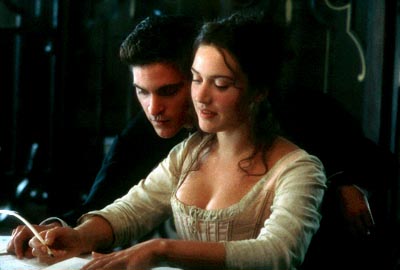Released in 2000 and directed by Philip Kaufman, Quills is a provocative and daring historical drama that explores the complex relationship between censorship, art, sexuality, and power. Set in post-Revolutionary France, the film centers on the final years of the infamous Marquis de Sade, played with raw intensity by Geoffrey Rush. Drawing inspiration from Doug Wright’s Obie-winning stage play of the same name, Quills crafts a haunting, eloquent narrative that combines historical fiction with deeply relevant philosophical questions about the nature of expression and repression.
This film is not merely a biopic; it is a meditation on the freedom of the written word, the moral obligations of artists, and the costs of societal control. As we explore the world of Quills, we uncover a story that is both historically rooted and timeless in its thematic resonance.
Historical Context: The Man Behind the Madness
Donatien Alphonse François, better known as the Marquis de Sade, was a French aristocrat, revolutionary, and writer infamous for his sexually explicit and often disturbing works. His name inspired the term “sadism,” and his writings—which explored themes of extreme sexual violence, blasphemy, and the corruption of morality—were considered so obscene that he was repeatedly imprisoned or exiled throughout his life. Sade spent many of his final years in the Charenton Asylum under relatively loose supervision, where he continued to write prolifically.
Quills fictionalizes this period, imagining a passionate tug-of-war between Sade’s artistic defiance and the forces trying to silence him. The film brings to life the ongoing debate about whether society should suppress works deemed immoral, or whether artistic freedom must be defended even at the cost of public discomfort or outrage.

Plot Overview
Quills opens inside the Charenton Asylum, where Sade is housed among society’s marginalized and mentally ill. Under the relatively tolerant oversight of Abbé du Coulmier (Joaquin Phoenix), Sade enjoys a degree of creative freedom. He writes explicit tales that Madeleine LeClerc (Kate Winslet), a young laundress at the asylum, helps smuggle out for publication. His work is a hit among Parisian readers and stirs controversy among the upper classes.
When a prominent aristocrat is discovered dead in a sexually compromising situation believed to be inspired by Sade’s writings, the government takes notice. Enter Dr. Royer-Collard (Michael Caine), a state official determined to suppress Sade’s influence. Appointed to bring the asylum under stricter control, Royer-Collard imposes severe restrictions on Sade and pressures the Abbé to enforce them.
Despite being stripped of writing materials, Sade resorts to increasingly desperate and imaginative methods to continue his work: writing in wine, blood, and even his own feces. The film escalates in intensity as the battle between repression and expression becomes both physical and psychological. Madeleine is caught in the crossfire, paying the ultimate price for her loyalty. The Abbé is driven to madness, tormented by guilt and inner conflict. And Sade, even in death, continues to echo his defiant cry for creative freedom.
Themes
Freedom of Expression vs. Censorship
At its core, Quills is a bold defense of artistic expression. It questions society’s right to control or suppress ideas, no matter how provocative or offensive they may be. The film draws parallels between historical censorship and contemporary debates about media, literature, and freedom of speech. Should we protect audiences from potentially damaging content? Or should all voices be heard, even if they disturb us?
Sade’s character insists that writing is an outlet for his darkest desires, a place where he can exorcise demons without enacting real harm. His jailors, however, see his words as dangerous acts that inspire immoral behavior. The film leaves the audience to grapple with the implications of both positions.
The Power and Danger of Art
Quills explores the idea that art can be both enlightening and destructive. Sade’s stories ignite the imaginations of readers and challenge authority, but they also contribute—at least indirectly—to violence and chaos. The film doesn’t offer easy answers. Instead, it invites the viewer to consider the responsibility that artists carry, and the impact their work can have on the world.
The metaphor of the quill itself—the delicate instrument that channels both beauty and brutality—is a recurring motif. Writing becomes both a weapon and a sanctuary, capable of saving the soul or damning it.

Sexuality, Morality, and Hypocrisy
The film doesn’t shy away from sexual content. In fact, sexuality is central to its plot and message. Sade’s tales are graphically erotic, and they reflect his disdain for conventional morality, particularly the hypocrisy of those in power. Dr. Royer-Collard, for instance, presents himself as a moral authority but is revealed to be deeply repressive and abusive, especially in his marriage to a much younger woman.
The film suggests that suppression of desire often leads to perversion and cruelty. By contrast, Sade, though morally repugnant in many ways, is open about his depravity and arguably more honest than his self-righteous oppressors.
Madness and Sanity
Set in an asylum, Quills naturally engages with questions of sanity. Who is truly mad—the man who writes depraved fantasies, or the society that responds to them with violence? The Abbé, initially presented as compassionate and rational, is gradually driven to mental breakdown, while Sade remains eerily composed even in the face of torture. The asylum becomes a microcosm of a world where reason and madness are often indistinguishable.
Performances
Geoffrey Rush as the Marquis de Sade
Rush’s performance as Sade is mesmerizing and unsettling. He brings both charm and menace to the role, portraying the infamous writer as a man of intellect, passion, and cunning. Rush avoids caricature, instead delivering a nuanced portrayal of someone who is both repulsive and strangely admirable. His Sade is defiant to the end, even as he loses everything.
Kate Winslet as Madeleine LeClerc
Winslet gives a tender and tragic performance as the young laundress who becomes entranced by Sade’s writing. Her character is caught between innocence and experience, admiration and disillusionment. Winslet conveys Madeleine’s curiosity, bravery, and eventual heartbreak with sensitivity and grace.
Joaquin Phoenix as Abbé du Coulmier
Phoenix portrays the Abbé as a man torn between duty and compassion. Initially, he tries to balance the asylum’s needs with Sade’s right to express himself. But as pressures mount, he becomes increasingly conflicted and tormented. Phoenix captures the character’s descent into guilt and despair with emotional depth.
Michael Caine as Dr. Royer-Collard
Caine plays the film’s antagonist with cold authority. His Royer-Collard is a man of power who hides his insecurities behind a mask of morality. Caine brings a steely presence to the role, making him one of the most detestable yet fascinating characters in the film.
Cinematic Style
Direction and Cinematography
Philip Kaufman’s direction balances theatrical dialogue with cinematic visual storytelling. The film is atmospheric and immersive, with lush period details and moody lighting that reflect the dark themes. Cinematographer Philippe Rousselot uses rich shadows and candlelit interiors to create a world where beauty and horror coexist.
Set and Costume Design
The production design captures the grandeur and decay of post-revolutionary France. The asylum is both a sanctuary and a prison, a place of confinement and creativity. Costumes reflect class and character—Sade’s disheveled aristocratic attire, Madeleine’s modest dresses, and Royer-Collard’s imposing uniforms all contribute to the film’s layered storytelling.
Music and Sound
The score by Stephen Warbeck is haunting and melancholic, enhancing the emotional and philosophical undertones of the story. The sound design emphasizes the physicality of writing—the scratch of a quill, the rustle of paper, the creak of doors—underscoring the sensory experience of creating art under duress.
Reception and Legacy
Upon its release, Quills received critical acclaim for its bold storytelling and powerful performances. It was nominated for three Academy Awards: Best Actor (Rush), Best Art Direction, and Best Costume Design. It also won several international film festival awards and garnered Golden Globe and BAFTA nominations.
Critics praised the film’s intellectual ambition and emotional intensity, though some were divided on its explicit content. Supporters hailed it as a brave exploration of censorship and creativity, while detractors questioned whether it glamorized depravity.
In the years since its release, Quills has become a significant film in discussions about freedom of expression, censorship in art, and the role of the artist in society. It continues to be studied in academic settings and remains relevant in the era of social media, cancel culture, and ideological polarization.
Modern Relevance
More than two decades after its release, Quills remains strikingly relevant. In a world where debates about free speech, artistic responsibility, and moral boundaries dominate public discourse, the film’s questions feel as urgent as ever:
- Should artists be free to offend?
- Who decides what is obscene?
- Can censorship protect society, or does it stifle necessary dialogue?
In addressing these questions, Quills challenges the audience to reflect on the power of words—and the lengths to which people will go to either preserve or suppress them.





